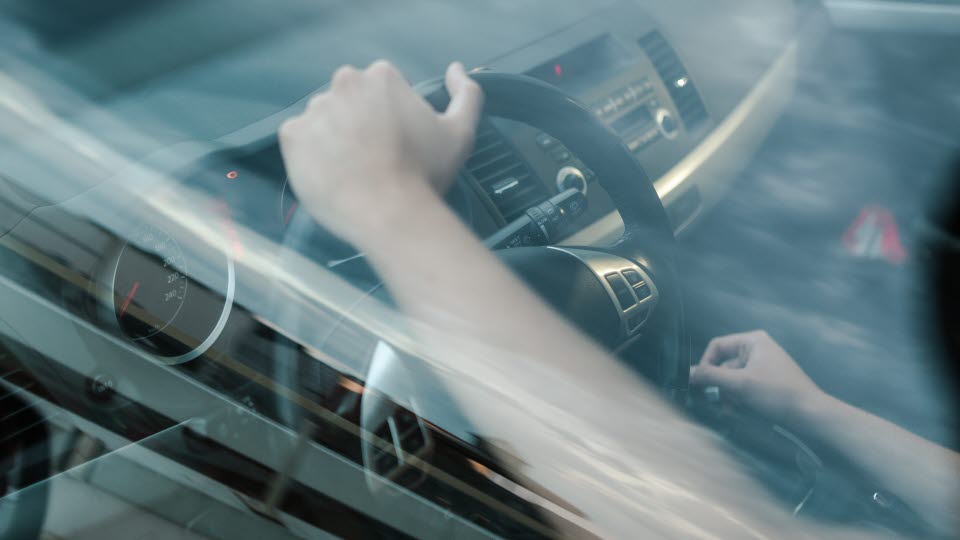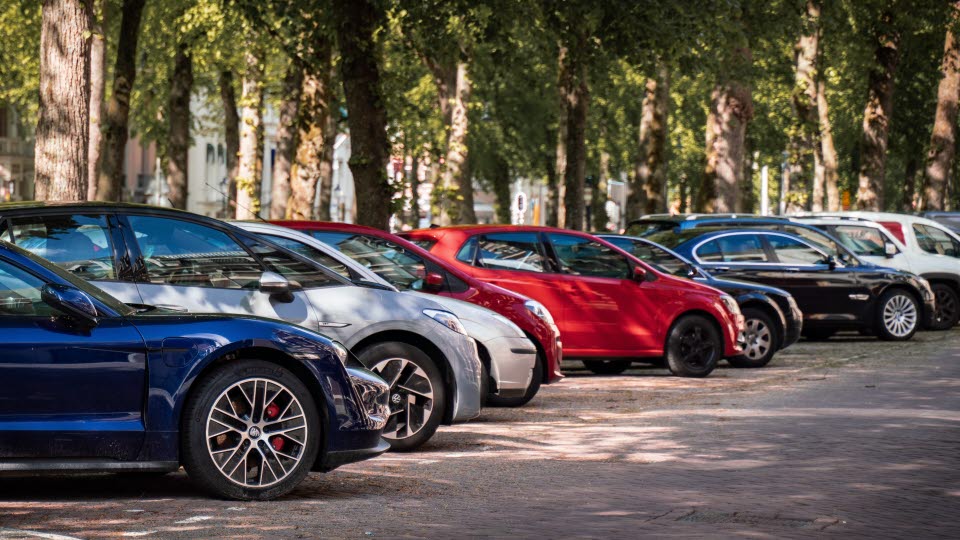
Reduce your fuel consumption and environmental impact
Driving your car in an environmentally friendly way will offer better performance, increased fuel economy and be cheaper to run.
By considering the following steps, you will also discover that your driving can be less stressful which means that you might also arrive at your destination in better shape.
The following shows what you need to do in order to reduce your emissions while reducing costs and the risk of being involved in an accident.

Before setting off:
1. Reduce the number of cold starts
Cold starts are the leading cause of harmful emissions from cars due to the engine and after-treatment systems operating below the optimal temperatures. Whenever an engine is started at a temperature below +10 degrees Celsius, the car emits much higher amounts of harmful pollutants than during warm operation and the fuel consumption is increased.
The most efficient ways you can reduce the cold start emissions includes avoiding unnecessary trips, parking in a garage when ambient temperatures are low or use some kind of engine heater device, if available. Planning the longest distances at the beginning of the trip can further reduce the total cold start emissions of your trip.
Studies have found that modern petrol cars release the same amount of harmful emissions in the first 30 seconds after a cold start as during a 300 kilometre drive.
Electrical preheating can reduce the total amount of harmful
emissions by up to 71% and fuel consumption by up to 24% under the conditions tested. In a year a driver can also save around 300 Euro.
2. Avoid unnecessary driving by planning your trip wisely
Try to combine different tasks during one journey. Always start with the destination that is furthest from home. If the distance is short, it might be better to walk or cycle. Thus, planning your trip wisely will not only help reduce your emissions, but it will also decrease fuel consumptions.

During the journey:
3. Reduce the use of the air conditioning system
The air conditioning system is often used, even if it is not necessary. It is important to remember that an engine will work harder when using the air conditioning, which increases fuel consumption and emissions.
However, it may be more fuel efficient to use the vehicle’s air conditioning system than to travel with the windows down as this creates drag on the vehicle, increasing fuel consumption and emissions, especially at high speed. Furthermore, lowering the window is not recommended in congested areas since it will let in air mixed with a rather high concentration of NOx.
The recommendation is to turn it off when it is not necessary but also a few kilometres before reaching your destination, as the system will allow cool air to continue circulating via the fans.
The air conditioning system is known to be a substantial
source of extra emissions given its additional energy consumption ranging up to 6 kW power, equivalent to the
power needed to drive a car steadily at 56 km/h. Driving with open windows increases drag on the vehicle by approximately 10%.
4. Accelerate smoothly
Accelerate quickly to 50 km/h, from there maintain just enough
pressure on the gas pedal to keep the speedometer moving steadily upwards, until the desired speed is reached.
Driving at 100 km/h on a motorway produces less amount of NOx emissions and the increase in travel time is only marginal. Driving a distance of 30 km, at a speed of 100 km/h, only takes roughly 3 minutes longer than driving at a speed of 120 km/h.
5. Try to maintain a constant speed
Driving along at a constant speed not only reduces fuel consumption,
but also results in less pollution. Ideal cruising speeds for conventional cars, in terms of optimal fuel consumption and pollutant emissions, are in the range of 55–80 km/h. As a rule of thumb, keep a constant speed whenever possible and try not to exceed 100 km/h. Therefore, drive with a light right foot, keep a constant speed and try not to exceed 100 km/h.
A reduction in speed from 120 km/h to 90 km/h decreases the consumption of petrol by as much as 20%.
6. Use the foot brake gently or use engine braking
The worst thing you can do is to approach a stop at a high speed, brake hard to come to a stop just before the light turns red and then accelerate to your original speed again after standing still.
If you anticipate a traffic light simply release the accelerator pedal and reduce the speed slowly. Hopefully that it will turn green before you get there. This also minimizes the engines idling time at the intersection, which reduces the cost of fuel. Remember that a car can be driven at a constant speed for a relatively long distance without additional acceleration.
If you are driving a car with a manual gearbox, then shift to a lower gear to decelerate using the engine before applying the foot brake. If you have an automatic transmission, release the accelerator pedal. A car that is engine braking consumes no fuel.
7. Anticipate the traffic conditions and try to avoid complete stops
When you start the car from a standstill, the car draws large amounts of fuel and it takes time to get up to the same speed again. Avoiding stops is therefore one of the best ways to save fuel. It also saves time. You can reduce the number of stops through good route planning and by having good foresight when approaching intersections and roundabouts.
The simple truth is that avoiding complete stops minimize
harmful emissions. It is also significantly faster in city traffic, the reduction in travel time can be between 5–12%.
8. Avoid harsh braking
If you drive in an aggressive way, i.e. sudden and hard braking, tiny worn-off pieces of tyres and brake pads are suspended in the air which affects both people’s health and the environment. Braking harshly also leads to increased fuel consumption.
If you brake as little as possible, you will extend the life of your brakes and tyres and driving will be more comfortable. Therefore, drive with a light right foot on the brake.
Emissions from brakes emissions can be inhaled and contribute to health effects like airway and cardiovascular disease. Sensitive groups in the population, like children, elderly and people with airway diseases are especially affected by particulate air pollution. Once tyre particles have made it into rivers or oceans, they can negatively affect marine life.
9. Do not idle for more than 30 seconds
While you are idling, i.e. keeping your engine running while stationary, your car is polluting the environment. Don’t forget that idling engine also increases fuel consumption.
If the waiting time is longer than 30 seconds, it is recommended that you switch off the engine. If your car is fitted with a start-stop system, make sure it is switched on to relieve you of this task. Such start-stop functions can improve fuel efficiency by 20%.

Other changes to your car
Changes you can make to your car which also reduce fuel consumption and lower emissions.
1. Make sure that the tyres have the correct inflations pressure, are aligned and suitable for the season
The correct inflation pressure helps to maximize the fuel economy and tyre lifetime. It will also reduce particle emissions, compared the underinflated tyres. Therefore, keep an eye on your tyre pressure. For the correct pressure, look at the manual or the sticker inside of the driver’s door and use the highest number.
When replacing your tyres, consider choosing ones that have low rolling resistance; all tyres have an EU tyre label giving this information, where A is the most efficient. Followi the service intervals will ensure your wheels are aligned. Misaligned wheels will wear down your car’s tyres faster and increase fuel consumption.
If you use winter tyres during the cold part of the year, be sure to switch to summer tyres according to regulations or when there is no risk for freezing temperatures. The softer rubber of winter tyres will wear down quicker and contribute more to air pollution in spring and summer temperatures than summer tyres.
Underinflated tyres typically result in 3% higher fuel consumption. The use of underinflated summer tyres also increased the emission of NOx with 2.3%.
2. Service your car on a regular basis
A car service can involve up to 50 or more components; for instance,
engine oil change and/or filter replacement. The engine oil is very important for the engine since it lubricates, cleans, cools, prevents wear and overheating. It must be clean and therefore changed at regular intervals. Your vehicle’s handbook tells you how often you need to change the oil and the filter. Usually this is based on mileage or time. The recommendation varies, but for older cars it might be after 7000 kilometres. Regular servicing keeps the car in good working order and adds to the longevity of the vehicle.
3. Remove roof racks when not in use and do not drive with unnecessary load
If you have a roof rack, bike carrier or roof box fitted on your vehicle, this will create resistance and cause drag increasing your vehicle emissions. Unnecessary load will increase fuel consumption as well as tyre and brake wear and therefore also your car’s emissions of CO2, NOx and particles.
4. Change your car
Modern cars are more efficient than before, with manufacturers facing increasingly harder environmental legislation. Thus, a newer car might be the best option if a significant reduction is required. However, before buying the car ensure that it does not emit more than 95 g CO2/km, which is the new EU standard. This corresponds to a fuel consumption of around 4.1 l/100 km of petrol or 3.6 l/100 km of diesel. Hybrid and battery electric cars have lower emissions, but no car is yet zero-emitting, since tyres and brakes will still emit particles while driving. Heavier cars with powerful engines will generally pollute more.

Reducing your car’s emissions is great for the environment and our health. We are not only talking about carbon dioxide (CO2) but also nitrogen oxides (NOx) as well as particles from the exhaust and the wear of tyres and brakes.
Air pollution is the major cause of premature deaths and disease in the EU and transport is responsible for over a quarter of all greenhouse gases. Most of this comes from cars. Carbon dioxide is a greenhouse gas which absorbs and radiates heat within the Earth’s atmosphere and is therefore linked to global warming.
When it comes to the emission of NOx, road transport in Europe accounts for more than 30% of the emissions of this hazardous gas.
The emission of NOx and particles can lead to respiratory and cardiovascular diseases, lower birth weight, disease of the central nervous system, diabetes and cancer, just to name a few. Longer exposure to them may also contribute to the development of asthma. Particles with a size of 2.5 micrometre (that’s one-millionth of a metre) or lower were responsible for around 400.000 premature deaths during 2018 in the EU (EEA Report, 2020).
In addition to having an effect on our health NOx also has a negative impact on the environment, forming smog and acid rain.
The good news is that as a driver you can help to reduce these harmful effects by changing your driving style and properly maintaining your car. Last but not least, plan the car trip and consider whether the trip is necessary.
Source: EU project uCARe
The recommendations on this webpage are derived from the H2020 uCARe project and the brochure:
Changing your driving style to reduce driving emissions (2021, PDF on uCARe:s website) External link.
External link.
uCARe stands for You Can Always Reduce Emissions because you care
More information can be found on: project-ucare.eu External link.
External link.

This project has received funding from the European Union's Horizon 2020 research and innovation programme under grant agreement No 815002.
